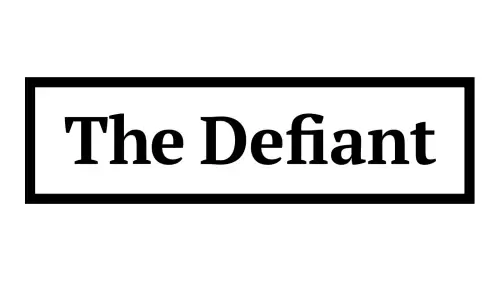 |
|
 |
|
 |
|
 |
|
 |
|
 |
|
 |
|
 |
|
 |
|
 |
|
 |
|
 |
|
 |
|
 |
|
 |
|
Cryptocurrency News Articles
Ripple's Bold Moves: Bank License, Fed Master Account, and Stablecoin Ambitions
Jul 03, 2025 at 03:58 am
Ripple is making waves with its applications for a national bank license and a Fed master account. Here's what it means for the future of stablecoins and crypto regulation.

Ripple's Bold Moves: Bank License, Fed Master Account, and Stablecoin Ambitions
Ripple is stepping up its game! With applications for a national bank license and a Federal Reserve master account, the company is signaling a major push into traditional finance. Let's break down what this means.
Ripple Files for a National Banking License
Ripple's application for a national banking license with the U.S. Office of the Comptroller of the Currency (OCC) is a big deal. This move would bring Ripple under federal oversight, adding to its existing regulatory framework with New York's financial authority. Think of it as Ripple wanting to play by the big leagues' rules, especially for its stablecoin, RLUSD.
By seeking both state (via NYDFS) and federal oversight, Ripple aims to set a new standard for trust in the stablecoin market. It's like saying, "Hey, we're serious about compliance and transparency!"
Seeking a Federal Master Reserve Account
But wait, there's more! Ripple, through its subsidiary Standard Custody & Trust, has also applied for a Federal Reserve master account. This would give them direct access to the Fed, potentially boosting liquidity, transparency, and user confidence in RLUSD. Imagine holding reserves directly at the central bank – that's a serious flex.
This move aims to reduce third-party risks and add an extra layer of stability. It's all about building a secure infrastructure with banking-grade custodial practices.
The Regulatory Landscape and Stablecoin Wars
Ripple's moves come amid increasing scrutiny of stablecoins and a push for clearer regulations. While companies like Anchorage Digital are raising concerns about stablecoin reserves and potential vulnerabilities, Ripple is positioning itself as a leader in compliance and transparency.
While Anchorage is steering its clients away from USDC and AUSD, citing concerns over regulatory oversight, reserve transparency, and issuer concentration risks, Ripple seems to be taking the opposite approach by embracing regulation and seeking closer ties with traditional financial institutions. This difference in strategy highlights the ongoing debate and evolving landscape within the stablecoin sector. It's important to remember that even ratings from S&P and Bluechip do not guarantee future stability or compliance.
Why This Matters
If Ripple gets its way with both the bank license and the Fed account, it could offer regulated crypto services within a bank-compliant framework. This would put them ahead of the game in integrating with the U.S. financial system. It's not just about stablecoins; it's about becoming a major player in the future of finance.
Final Thoughts
Ripple's ambitious moves are definitely something to watch. Whether they succeed in their quest for a bank license and Fed master account remains to be seen, but one thing is clear: they're not afraid to shake things up in the world of crypto and traditional finance. So, grab your popcorn and get ready for the next act – it's gonna be a wild ride!
Disclaimer:info@kdj.com
The information provided is not trading advice. kdj.com does not assume any responsibility for any investments made based on the information provided in this article. Cryptocurrencies are highly volatile and it is highly recommended that you invest with caution after thorough research!
If you believe that the content used on this website infringes your copyright, please contact us immediately (info@kdj.com) and we will delete it promptly.





























































